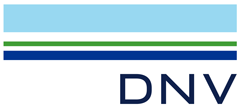Closing the safety gap in an era of transformation
New safety risks are emerging from shipping’s digitalisation and decarbonisation transition
THE classification society DNV is advising industry leaders to grasp safety risks that may arise from growing reliance on digital systems and data, and new fuels and fuel technologies.
A DNV white paper, Closing the Safety Gap in an Era of Transformation, warns of a looming safety gap between today’s safety risk-management approaches and the changing safety-risk picture that these transformations will shape within the next five years or so.
“The paper is a wake-up call to understand safety issues that can arise as we digitalise and decarbonise to make our industry safer and cleaner,” said Fenna van de Merwe, Principal Consultant at DNV, and the paper’s lead author.
“Shipowners can use our arguments to help create a sound basis for a transparent, reasoned, and informed analysis of digitalisation and decarbonisation methods, but with safe maritime systems uppermost in their minds. The paper applies to operational vessels and newbuilds and is relevant, across a vessel’s life cycle,” she said.
The white paper argues that holistic risk management, including a systemic perspective on safety, is key to managing ‘safety hurdles’ (safety risks) on the road to a more digitalised, carbon-neutral industry.
Digitalisation offers huge potential to enhance efficiency, safety, and cost controls, but it brings risk; the system becomes more complex, with emergent properties that require attention. The white paper identifies three main safety hurdles associated with this greater system complexity and suggests how to overcome them.
Allocating tasks between people and technology
The paper sees ‘function allocation’ — division of functions between technology and people — and user-centered design as particularly important during digital transformation. This, Ms van de Merwe said, is because the complexity of the software that is now embedded in many systems, makes it increasingly difficult for people to diagnose a situation and intervene if there is an issue with a system. People adapt better than technology to unknown challenges and use all means, including technology, to handle situations creatively, the paper observes.
In one practical example, DNV has been working with the European Maritime Safety Agency to identify emerging risks and regulatory gaps related to varying degrees of vessel autonomy. This has involved describing how functions should be allocated between the operator and the system, followed by risk analysis to evaluate the solution’s safety.
Organisations need strategies with processes to manage changes resulting from digitalisation transformation, processes the DNV paper recommends should include a requirement to frequently revisit the strategy itself, to keep pace with technological development.
Safety hurdles during decarbonisation
Existing and pending decarbonisation targets are creating pressure to make timely choices about the realistic pathways to 2050: new, alternative, carbon-neutral fuels, and the associated fuel systems and infrastructure. International shipping must halve greenhouse gas (GHG) emissions by 2050 to meet IMO targets.
Closing the Safety Gap in an Era of Transformation identifies three main safety hurdles associated with alternative fuels and modes of operation. First, stakeholders may be working in functional silos focused on subsystems. DNV therefore recommends system integration to enable collaboration and transparency.
Second, regulatory frameworks cannot keep up with technology development. “This is why we recommend collective commitment to contribute with knowledge and experience to supplement missing regulations,” said Ms van de Merwe.
Third, suppliers and end users may lack maritime and fuel-specific competence. DNV believes the answer here is to develop the competences which are lacking and create a culture of continuous improvement.
Roadmaps for reducing the new risks
The paper offers thought leadership to start mapping a safe, efficient path through complexities arising from digitalisation and decarbonisation. Defining this path is possible ‘with foresight and a clear vision’, according to DNV’s Maritime Forecast to 2050.
”Our research showed that we need to continue to focus on the people on our way to a safer, cleaner future in maritime,” Ms van de Merwe said. “Through breaking down silos we can generate a holistic picture of safety risk, and collaborate towards identifying and implementing mitigating measures.”
DNV believes that approach will drive proactivity in understanding, defining, and meeting the challenges that shipping needs to overcome to achieve greater digitalisation and decarbonisation.
Download DNV’s white paper Closing the Safety Gap in an Era of Transformation here.

